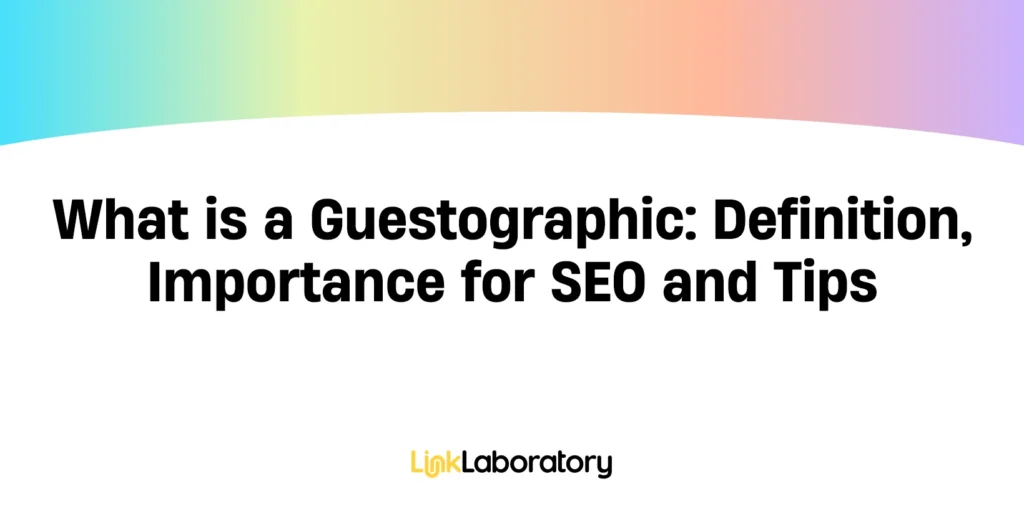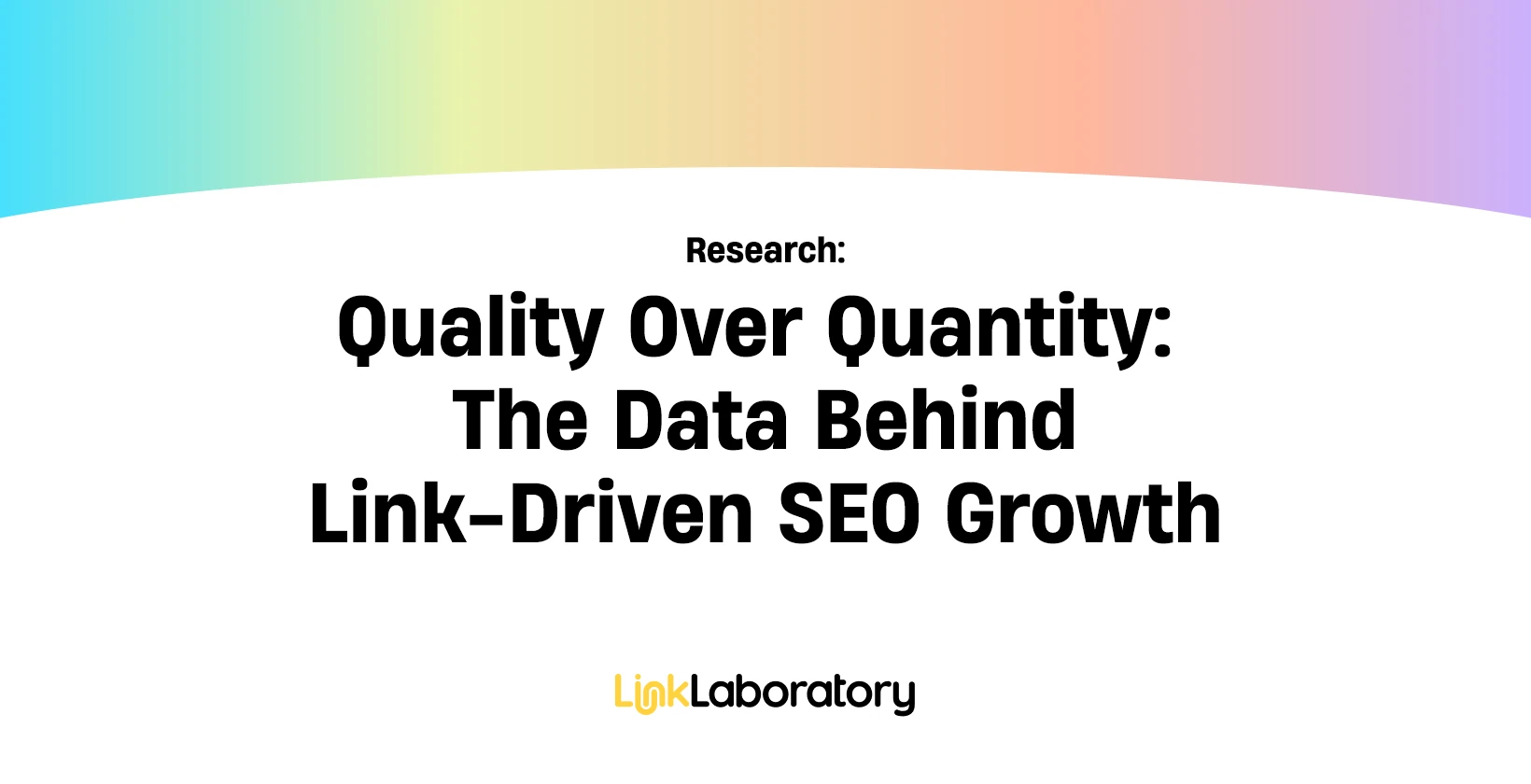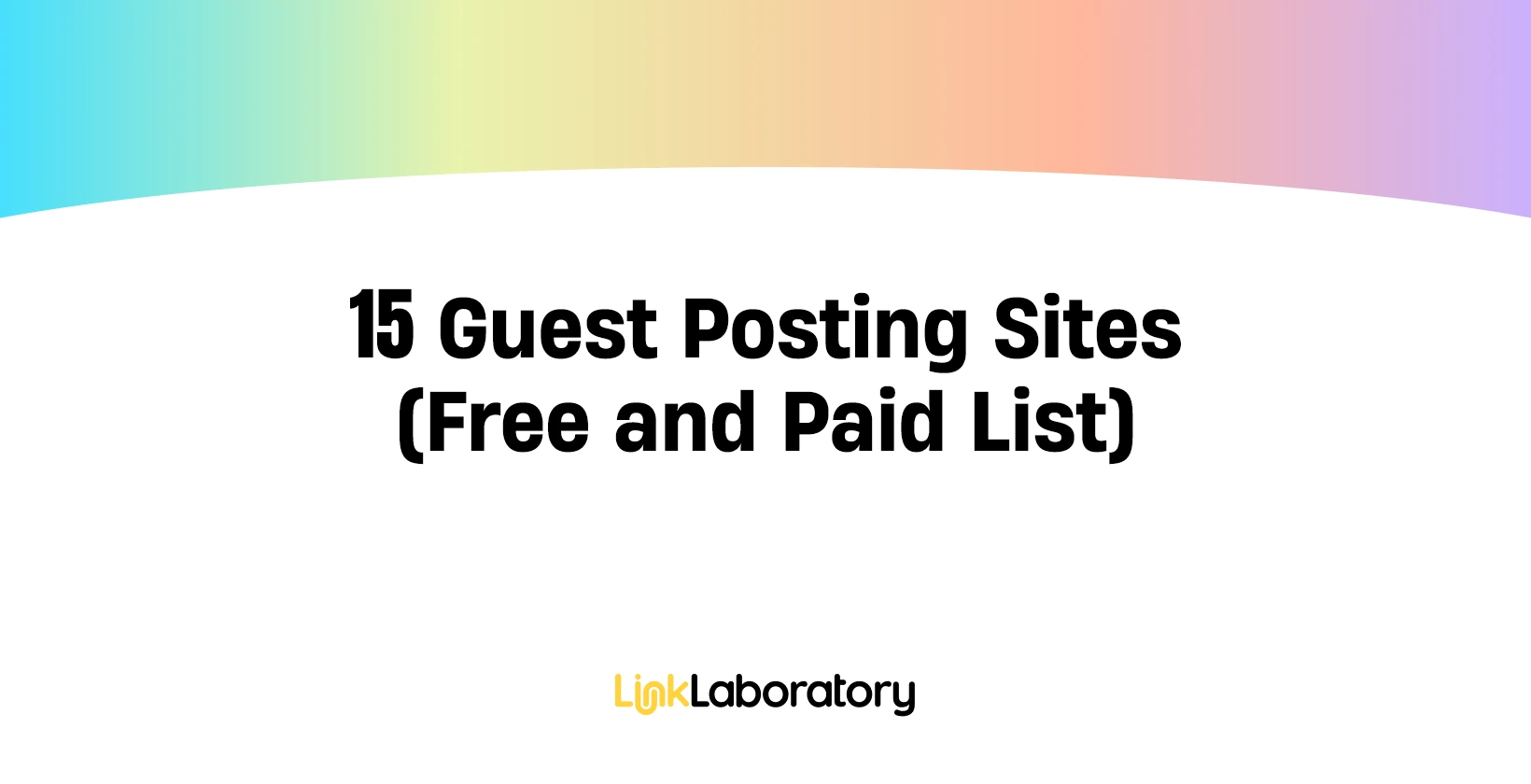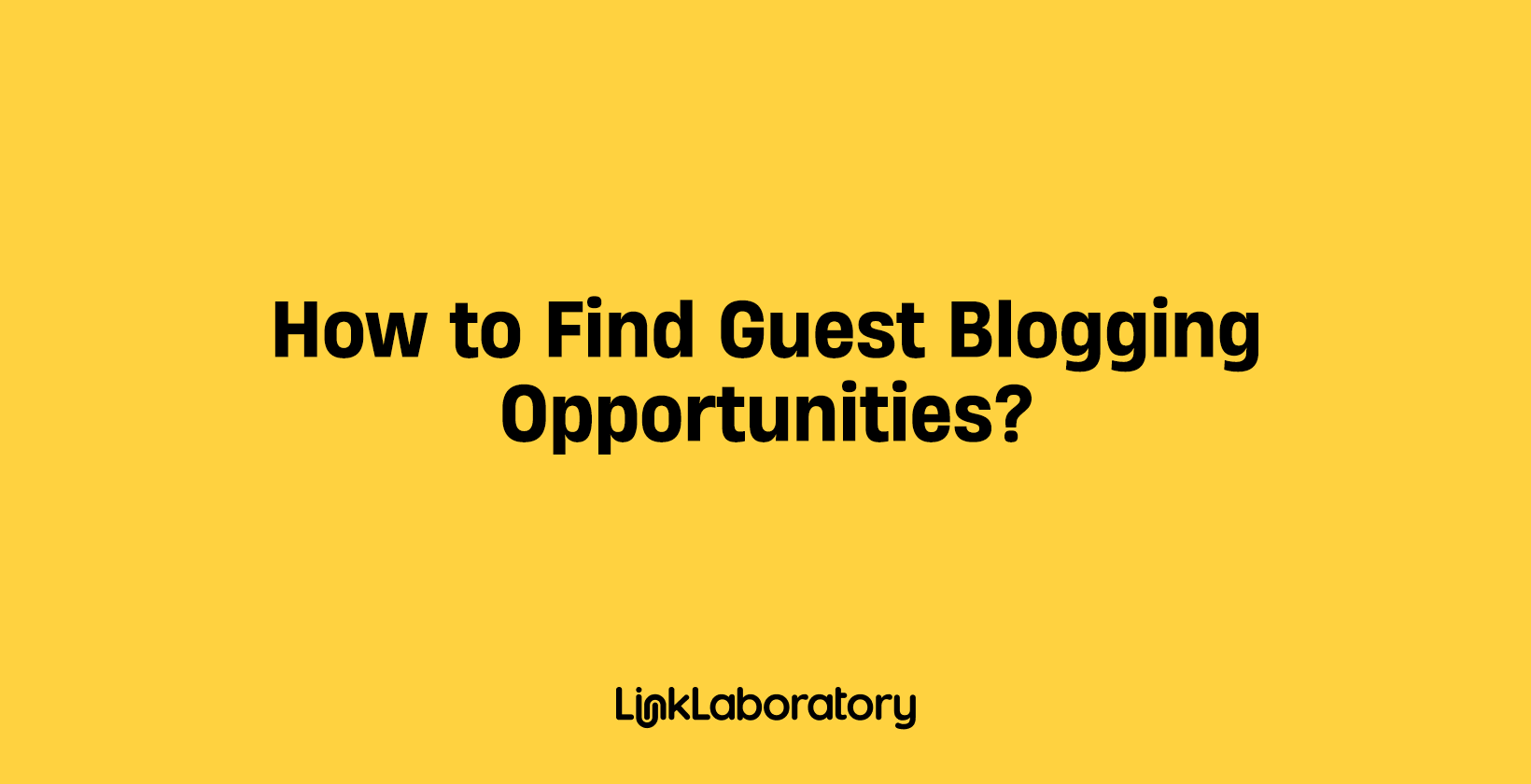A guestographic is a content marketing strategy that merges guest posting with infographic distribution. The guestographic strategy involves creating a visually engaging infographic and offering it to relevant websites for publication in exchange for a backlink. This content marketing strategy capitalizes on the viral appeal of infographics while generating high-quality, contextual backlinks that strengthen SEO performance.
Guestographics hold importance for SEO because they improve keyword rankings, enhance domain authority, and drive referral traffic from authoritative websites. Guestographics position brands in front of new audiences and establish thought leadership through data-rich visual assets. A consistent stream of placements strengthens visibility across niches and builds long-term ranking power.
Guestographics benefit brands by combining design, strategy, and distribution into a repeatable framework for link acquisition. A guestographic campaign delivers measurable SEO gains, expands brand reach, and positions businesses as authoritative voices in their industry. This article explores the definition and importance of guestographics alongside actionable strategies for generating high-impact backlinks.
What is a Guestographic?
A guestographic is a visual content asset that combines the structure of guest posting with the format of an infographic. Guestographics function as a collaborative exchange, where a creator develops a data-rich infographic and offers it to another website for publication. Unlike traditional guest articles, which rely solely on text, a guestographic communicates information through data visualization, design, and concise messaging. A guestographic is educational and visually persuasive, making it highly adaptable for publishers seeking engaging content to share with their audiences.
The key elements of a guestographic define its effectiveness. The infographic serves as the centerpiece, delivering information in a visually engaging and easy-to-share format. Backlink integration connects the published graphic to the creator’s website, directing referral traffic and strengthening authority. Targeted content ensures alignment with the host site’s audience, increasing relevance and acceptance. Informative design presents data, insights, or narratives with clarity, enhancing both comprehension and retention.
Complementary content, such as short explanatory text or supporting visuals, reinforces the graphic and provides context for the publisher’s audience. The overall purpose of a guestographic is to merge content marketing and link acquisition into a single strategy. Guestographics offer publishers a ready-made, high-quality asset that enriches their content while allowing the creator to expand brand reach and establish authority through visual storytelling.
Why are Guestographics Important for SEO?
Guestographics are important for SEO because they create a direct pathway to authoritative backlinks that elevate a website’s competitive strength in search rankings. Search engines evaluate backlink quality as a core ranking factor, and guestographics supply publishers with valuable content in exchange for links carrying contextual relevance. Unlike traditional link-building tactics that risk irrelevance or manipulation, guestographics generate editorial placements that signal authenticity and authority to search engines.
Guestographics drive SEO performance by aligning visual content with niche-specific audiences. Each infographic is tailored to a publisher’s readership, ensuring topical alignment and semantic relevance. This targeted fit strengthens the backlink’s weight within search algorithms, as links from industry-specific sources carry greater ranking influence. Over time, this creates a backlink portfolio built on precision rather than volume, which supports stable keyword growth and long-term domain authority.
The visual engagement of guestographics multiplies their SEO impact. Infographics capture attention faster than text-based content and attract higher sharing rates across blogs and social platforms. This viral potential generates secondary backlinks as additional websites adopt the resource, creating a ripple effect of organic visibility. The compound nature of guestographics extends reach, reinforces authority signals, and drives referral traffic with behavioral metrics such as dwell time and engagement.
Guestographics integrate into SEO strategies as a sustainable, white-hat link acquisition method. Each infographic functions as a marketing asset and a ranking lever, combining brand visibility, audience education, and technical SEO benefits into one strategy. In competitive ecosystems where organic ranking space is limited, guestographics stand out as a scalable tactic to strengthen brand positioning and search performance.
What are the Benefits of a Guestrographic?
The benefits of a guestographic include authority-building backlinks, amplified visibility, sustained audience engagement, and measurable improvements in search performance. Guestographics generate SEO impact by combining authoritative link acquisition with content that naturally scales visibility. Unlike generic outreach, guestographics deliver publishers an asset worth featuring, which secures backlinks that search engines recognize as contextually relevant.
Guestographics extend brand credibility by functioning as proof of expertise. Well-researched infographics reflect industry knowledge, supporting the E-E-A-T framework that search engines use to evaluate content quality. When authoritative publishers endorse and host a guestographic, they validate the accuracy of the information and the authority of the source. This dual validation builds topical dominance, positioning the brand as a reliable resource within its niche.
The visual-first design of guestographics accelerates audience engagement and sharing velocity. Infographics present structured data, trends, or insights in ways that simplify complex topics, encouraging audiences to share and cite the resource across additional channels. This natural distribution multiplies link equity without additional outreach, producing second-order backlinks and expanding brand visibility across the web. The viral potential creates a compounding cycle of authority growth that traditional content formats rarely achieve.
Higher referral traffic flows from niche-relevant placements, improving dwell time and lowering bounce rates, behavioral metrics that signal user satisfaction to search algorithms. Brands that consistently distribute guestographics benefit from long-tail keyword improvements, as related queries become associated with their visual assets through co-citation and co-occurrence. This semantic footprint widens organic reach, ensuring that one infographic supports ranking growth across multiple search dimensions.
How to Get Backlinks with Guestographics?
To get backlinks with guestographics, publish an original infographic on your website, then use targeted outreach to secure placements on other sites with proper attribution. The process begins with creating a compelling infographic that distills complex information into a visually digestible format. Select a topic that sits at the intersection of audience interest and industry relevance, then pair credible data with professional design.
After publishing, build a curated list of link prospects. Focus on authoritative websites that rank for topics related to your infographic, and revisit professional contacts who run content-driven platforms. Personalize every pitch by explaining why the content enriches the publisher’s existing coverage. Clarify attribution details by requesting a do-follow link with specific anchor text pointing back to the original source.
Once placements begin, track backlink acquisition through SEO tools to monitor growth in authority and referral traffic. Evaluate which industries, websites, or content formats yielded the strongest results, then refine your strategy for subsequent campaigns. The compound effect of distributing guestographics across authoritative websites strengthens brand visibility, drives qualified traffic, and signals topical expertise to search engines.
How to Use Guestographics to Improve SEO?
Use guestographics to improve SEO by creating visually compelling infographics, distributing them through strategic outreach, and securing backlinks from authoritative websites that amplify your visibility, referral traffic, and rankings. Guestographics outperform traditional guest posts because they combine data-rich visuals with contextual relevance that publishers want to share. When paired with tailored outreach, guestographics generate high-impact backlinks while positioning your brand as a trusted source of original insights.
Best practices for using guestographics to improve SEO are detailed below.
Research and Planning
Define your audience with precision. Identify their interests, search intent, and content preferences to ensure your infographic aligns with existing demand. Conduct keyword research to uncover trending topics and high-value phrases that position your content for search visibility. Select a subject that solves a real problem or clarifies a complex concept. Plan your infographic’s structure around data storytelling so publishers see immediate value in sharing it.
Strong research involves identifying industry pain points that remain underserved by current content. Survey communities, monitor forum discussions, and track recurring questions on platforms like Quora or Reddit. By addressing real user challenges, your guestographic secures higher editorial acceptance and generates organic shares. Leverage seasonal trends and emerging industry conversations to amplify relevance. An infographic tied to annual reports, breaking news, or new regulations naturally attracts more interest from journalists and bloggers.
Map your outreach potential before design begins, using SEO tools to evaluate the authority, traffic, and link behavior of potential publishers. A strong prospect list ensures your infographic investment aligns with realistic distribution opportunities rather than broad assumptions. Strategic alignment between research, topic selection, and publisher demand sets the foundation for high-performing guestographics.
Creating Interactive Infographics
Elevate your design beyond static visuals. Integrate clickable elements, animations, or GIFs that engage viewers longer and increase sharing potential. Use data visualization techniques that simplify complex datasets into accessible formats. Apply color psychology, typography, and layout hierarchy to direct attention where you want it. Add branding elements such as logo placement and URL integration without overwhelming the design. Ensure mobile responsiveness, as publishers and users frequently engage with infographics across devices.
Dynamic storytelling keeps users engaged beyond the initial scroll. Break down the infographic into modular sections that can be repurposed as standalone graphics for social channels or blog features. Accessibility further enhances usability and adoption. Add descriptive alt text, clear labels, and structured headings so search engines understand the content and visually impaired users gain value.
Data integrity drives trust. Infographics grounded in verifiable statistics from authoritative sources carry more weight in editorial decisions. Always cite original datasets, whitepapers, or research reports. Publishers prefer visual content backed by credible references because it elevates their own trustworthiness. The combination of authoritative data and sophisticated design elevates your guestographic, making it an impactful knowledge asset.
Outreach and Promotion
Target websites with high topical relevance and authority. Build a prospect list using advanced search operators, SEO tools, and competitor backlink analysis. Personalize your outreach emails by referencing the site’s audience and explaining how the infographic enhances their content strategy. Offer supporting text, such as a guest introduction or analysis, to reduce friction for editors. Follow up strategically, maintaining professionalism while reinforcing the mutual benefit of publishing your content.
Segmentation sharpens outreach success. Divide prospects into categories such as high-authority industry leaders, niche bloggers, and news-driven publishers. Tailor pitches to each segment, emphasizing industry depth for leaders, engagement value for bloggers, and timeliness for journalists. This granular approach ensures relevance and increases response rates.
Social amplification multiplies exposure. Share your guestographic on LinkedIn groups, Twitter threads, and industry Slack communities to create early traction. Public visibility signals value to publishers and triggers inbound inquiries from editors who want to feature your infographic. A proactive promotion strategy builds momentum before outreach emails even land.
Include a Backlink
Embed a link to your website directly within the infographic or in the introduction you provide to publishers. Position the backlink naturally, connecting it to the content topic for maximum SEO impact. Use keyword-optimized anchor text that reflects your target search terms. Ensure publishers include attribution to protect your ownership and maximize link equity.
Strategic anchor text selection maximizes SEO value. Map anchor terms to specific keyword clusters instead of generic brand mentions. This practice spreads authority across multiple ranking opportunities, allowing a single infographic to influence visibility across a broader keyword portfolio. Contextual placement enhances link quality.
Ensure that backlinks appear within the editorial body of published articles rather than being relegated to image credits or footnotes. Track compliance to protect attribution integrity. Use backlink monitoring tools to identify unlinked mentions of your infographic. If a publisher features the visual without credit, reach out promptly to secure the missing link.
Measure Performance & Improve
Track backlink acquisitions with SEO monitoring tools and verify link quality, anchor text, and referral traffic. Analyze performance metrics such as bounce rate, dwell time, and conversions from referral visits. Measure social shares and secondary links generated when other sites republish your infographic. Compare results across campaigns to identify which topics, formats, or outreach strategies yield the strongest SEO impact. Refine future guestographic efforts by doubling down on successful elements and discarding ineffective tactics.
Evaluate the distribution funnel holistically, measuring email open rates, response ratios, and placement turnaround times to identify friction in outreach. Benchmark your campaign against industry standards. Compare link velocity, domain authority growth, and referral engagement with recognized averages in your niche. Positioning your performance against market baselines highlights where your guestographic strategy outperforms competitors and where refinement is necessary.
Use learnings to scale future campaigns. Identify repeatable patterns, such as topic categories that consistently secure high-authority placements, or outreach methods that deliver faster responses. Create standard operating procedures for your team, ensuring each new guestographic benefits from accumulated knowledge. A feedback-driven cycle transforms guestographics from one-off experiments into a sustainable link-building engine.
How to Create a Guestographic?
To create a guestographic, start with rigorous research and topic selection. Analyze industry trends, competitor gaps, and underexplored themes within authoritative websites to identify a subject that delivers unique value. Design the infographic with clarity and precision, transforming complex data into an accessible visual narrative. Use concise text, structured hierarchies, and engaging visuals that capture attention without overwhelming the reader.
Incorporate brand elements and expert contributions to strengthen credibility while ensuring the design remains adaptable for diverse publishing environments. Identify target websites that have a history of featuring infographics within your niche. Evaluate them through domain authority, topical relevance, and engagement levels to prioritize outreach efforts. Craft a tailored pitch that emphasizes audience benefit, editorial value, and the exclusivity of your visual content.
Provide supporting copy such as introductions or summaries to ease editorial integration. A personalized approach elevates your pitch above generic submissions and increases acceptance rates. Secure backlinks through persistent follow-up and clear communication of anchor text requirements. Document published placements, monitor referral traffic, and measure link acquisition to assess campaign performance.
What are the 5 Elements of an Infographic?
The 5 elements of an infographic are story, data, visuals, design, and concise messaging. A strong story anchors the infographic by defining its purpose, identifying the target audience, and delivering a clear takeaway. Data gives the narrative credibility, and using verified statistics, charts, and graphs ensures that the content communicates authority while remaining digestible.
Visuals amplify engagement, with icons, illustrations, and images helping to highlight important points and guide the reader’s focus. Color and typography establish consistency, improve readability, and reinforce brand identity, making the design cohesive and professional. Concise messaging distills complex ideas into clear statements that are easy to scan, ensuring the infographic communicates value instantly without overwhelming the reader.
What is Guest Posting in SEO?
Guest posting in SEO is a strategy where an author contributes original content to another website within a relevant niche to secure a backlink, expand reach, and strengthen domain authority. The process relies on publishing high-quality articles that provide value to the host site’s audience while positioning the guest author as a credible voice in their industry.
A well-placed backlink within the content or author bio signals relevance and trust to search engines, improving search rankings and directing qualified referral traffic. This approach enhances brand visibility and builds authority by associating your name and content with established publishers in the field. Effective guest posting requires selecting reputable websites, creating tailored content, and framing an author bio that reinforces expertise while driving traffic back to your site.



